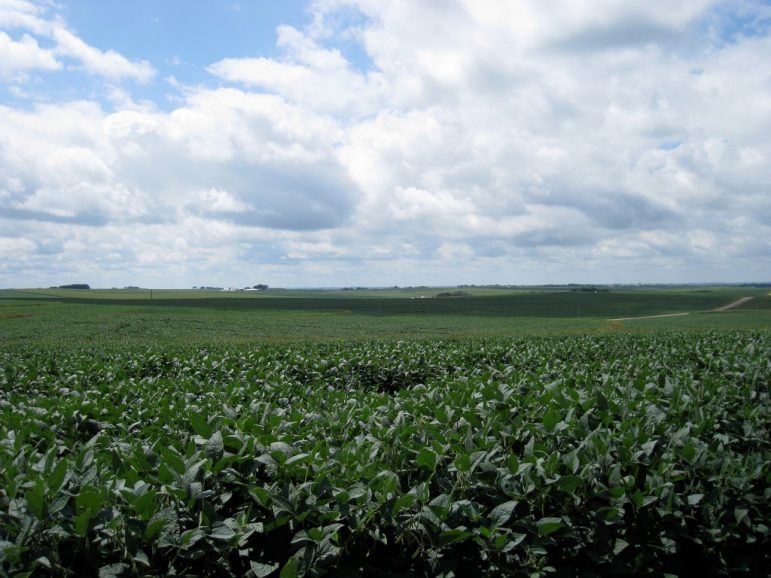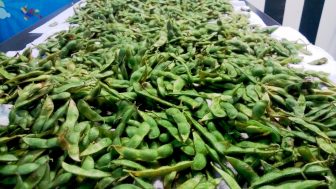
Arkansas currently grows the most commercial edamame in the U.S. Image: Pamela Reed
By Carin Tunney
Great Lakes farmers could cash in on edamame, but a shift from dry soybeans won’t be seamless, experts say.
Edamame is a popular vegetable at many U.S. restaurants. It’s a type of soybean that is harvested while tender.
The U.S. Department of Agriculture says 90 percent of soy products come from U.S. farms and more than 80-percent are grown in the Midwest. But that is mostly grain-type soybeans dried and fed to cattle or manufactured into protein sources like soy milk.
Edamame is considered a vegetable, and remains an untapped crop for Midwest farmers, since its rise in demand has developed over the past decade, says Marty Williams, a University of Illinois crop scientist and ecologist for the U.S. Department of Agriculture.
The first large-scale commercial effort to grow edamame began in Arkansas in 2014, but the U.S. mostly relies on imports, Williams said.
Experts say more than 100,000 tons of edamame entered the U.S. in 2010. That’s when Williams began researching why larger Midwest farms weren’t growing it.
The reason is that there was only one EPA-approved herbicide for edamame, he said, which reduces the chances of success. An alternative is hand-weeding at about $500 an acre.
Williams researched other options. Eight have cleared approval. Many were already used for the dried grain version of the bean, he said.

Edamame loses value if bruised or yellow. Image: Kim Rossi
Even so, edamame may be the high-maintenance cousin in the soy family as it requires careful harvesting.
The Center for Innovative Food Technology in Ohio (CIFT) began researching the feasibility of commercial edamame in Ohio about 18 months ago, said Rebecca Singer the center’s vice president of agricultural programs. But the center’s test plot succumbed to drought.
Edamame presents an opportunity for Midwest farmers, but there are differences between growing dried soybeans and edamame, she said.
Edamame has a five-day harvest window because the bean quickly loses flavor once it starts to yellow, experts said. And the bean has to be kept cool to maintain freshness until it is sold fresh, frozen or processed.
That means using harvesting equipment that is made for green beans rather dried soybeans.
“It’s a tender bean. It is not fully mature like a soybean, so that type of equipment was best suited because it is more gentle as it harvests,” Singer said.
Experts say further edamame research will eventually lead to a new source of income for Midwest farmers, but Williams said don’t expect a drastic change.
“Edamame isn’t going to ‘take over’ the landscape in the Great Lakes states,” he said. “While domestic demand has been on the rise for quite a while, and you can find it in grocery stores and several restaurants, even the most popular vegetable crops are grown on a relatively small land area.”